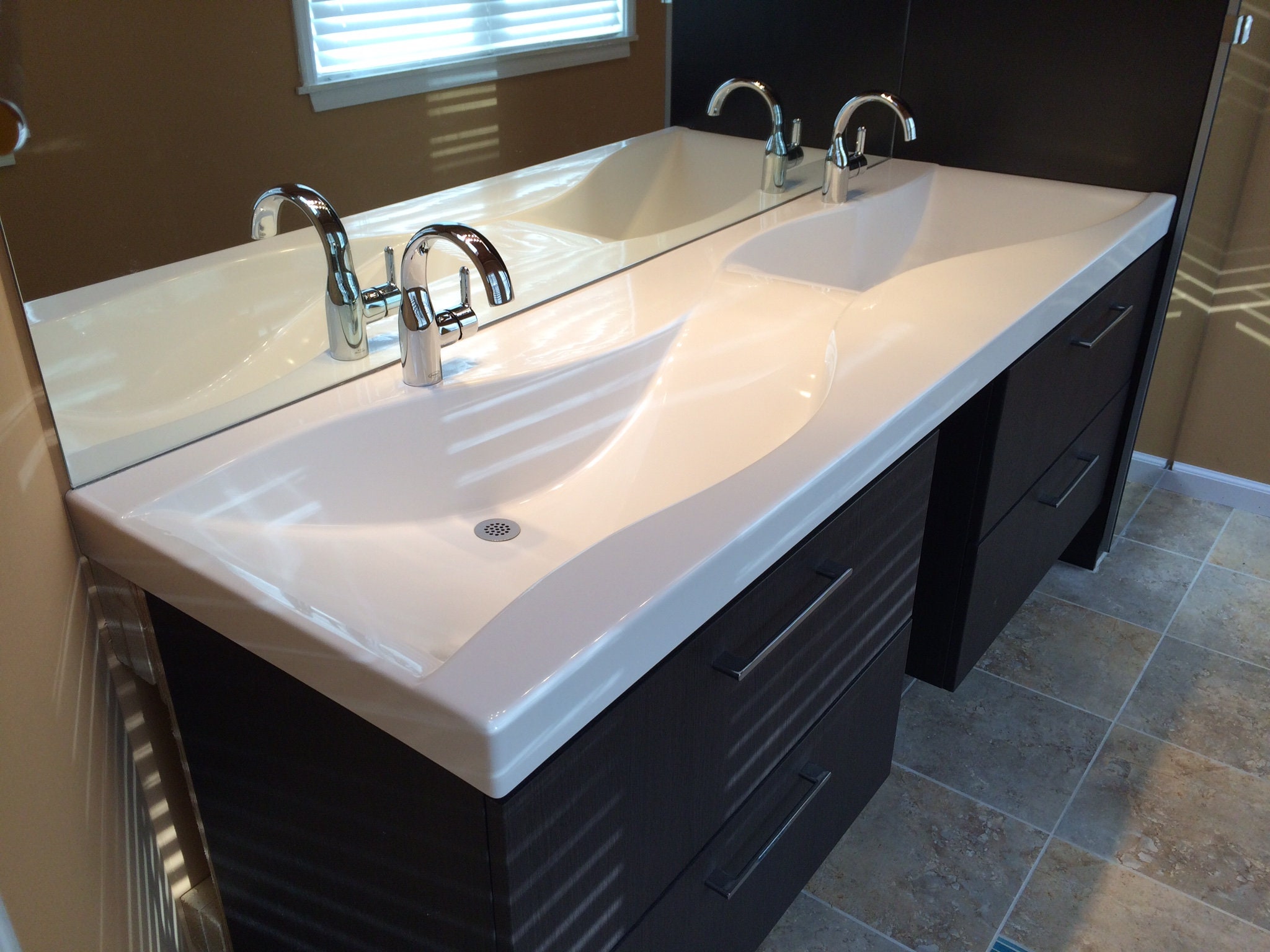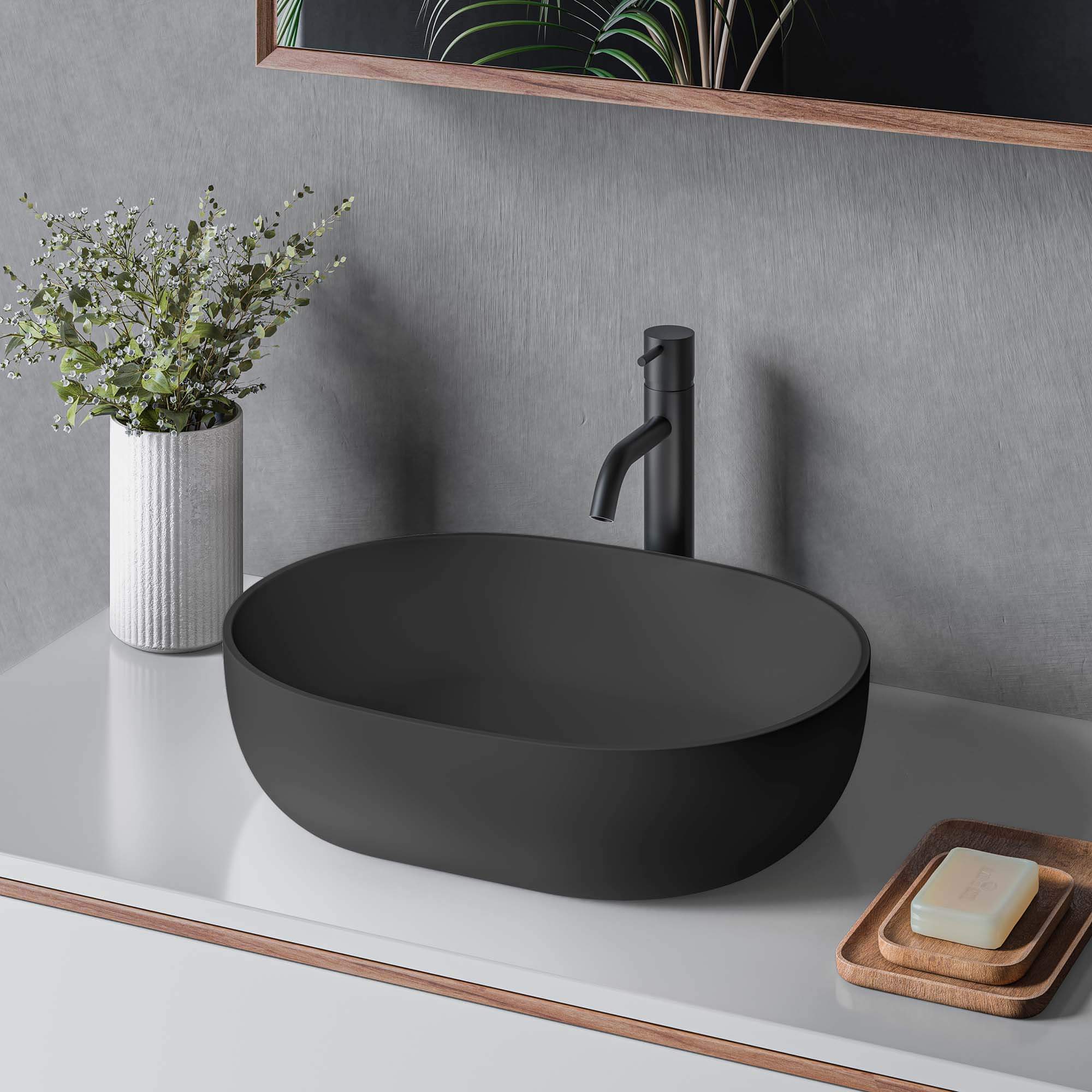Trends in Contemporary Bathroom Vanity Designs

The bathroom, once a purely functional space, has evolved into a sanctuary of relaxation and personal style. This shift is reflected in the contemporary bathroom vanity designs, which have become more than just storage units. They are now statement pieces that enhance the overall aesthetic and functionality of the bathroom.
Evolution of Bathroom Vanity Design
Over the past decade, bathroom vanity design has undergone a significant transformation, driven by changing lifestyles and a growing emphasis on aesthetics and functionality.
- Transition from Traditional to Modern: Traditional bathroom vanities, characterized by ornate details and heavy materials, have gradually given way to modern designs that prioritize clean lines, minimalist aesthetics, and functional storage solutions.
- Integration of Technology: The incorporation of technology, such as touch-sensitive faucets, LED lighting, and smart storage solutions, has revolutionized bathroom vanity design. These features enhance user experience and create a more sophisticated and user-friendly bathroom environment.
- Emphasis on Sustainability: The growing awareness of environmental sustainability has led to the use of eco-friendly materials, such as reclaimed wood, bamboo, and recycled glass, in bathroom vanity design. These materials not only reduce environmental impact but also add a unique and sustainable touch to the bathroom space.
Prominent Trends in Contemporary Bathroom Vanity Design
Contemporary bathroom vanity designs are characterized by a number of prominent trends that reflect the changing needs and preferences of homeowners.
- Minimalist Aesthetics: Contemporary bathroom vanities often feature clean lines, simple silhouettes, and a lack of excessive ornamentation. This minimalist aesthetic creates a sense of calm and spaciousness in the bathroom.
- Integrated Storage Solutions: Contemporary vanities prioritize functionality by incorporating clever storage solutions. This includes drawers, cabinets, and shelves that maximize storage space while maintaining a streamlined look.
- Use of Sustainable Materials: Contemporary bathroom vanities are increasingly made from sustainable materials such as reclaimed wood, bamboo, and recycled glass. These materials are eco-friendly and add a unique touch to the bathroom design.
Examples of Contemporary Bathroom Vanity Designs
Several contemporary bathroom vanity designs showcase the prominent trends discussed above.
- Floating Vanity with Integrated Lighting: This type of vanity features a sleek, minimalist design with a floating countertop that creates a sense of spaciousness. Integrated LED lighting beneath the countertop provides functional illumination and adds a modern touch.
- Vanity with Open Shelving: This design incorporates open shelving to create a visually airy and functional storage solution. The open shelving allows for easy access to toiletries and decorative items, while also adding a touch of visual interest.
- Vanity with a Waterfall Countertop: This design features a countertop with a cascading edge that creates a dramatic and modern aesthetic. The waterfall countertop adds a touch of elegance and sophistication to the bathroom space.
Materials and Finishes for Contemporary Bathroom Vanities

The choice of materials and finishes for a contemporary bathroom vanity is crucial, as it significantly impacts the overall aesthetic, durability, and maintenance requirements of the space. Contemporary design emphasizes clean lines, minimalist aesthetics, and a focus on functionality. Materials used for contemporary bathroom vanities are carefully selected to achieve these goals, balancing form and function.
Natural Stone
Natural stone, such as granite, marble, and quartz, brings a touch of elegance and sophistication to contemporary bathroom vanities. These materials are known for their durability, resistance to scratches and heat, and unique natural patterns.
- Granite: Granite is a highly durable and scratch-resistant material, making it ideal for high-traffic areas. It comes in a wide variety of colors and patterns, allowing for customization. However, granite is porous and requires regular sealing to prevent staining. It is also a heavier material, requiring strong support structures.
- Marble: Marble is known for its luxurious appearance and elegant veining. It is softer than granite and more susceptible to scratches and etching, requiring careful maintenance. Marble is also more porous and requires regular sealing. It is often used for vanity tops and accents, adding a touch of luxury to the bathroom.
- Quartz: Quartz is an engineered stone that combines natural quartz with resins and pigments. It is highly durable, scratch-resistant, and non-porous, making it a popular choice for contemporary bathroom vanities. Quartz comes in a wide range of colors and patterns, offering versatility in design. It requires minimal maintenance and is relatively easy to clean.
Wood
Wood is a classic material for bathroom vanities, offering warmth, natural beauty, and a timeless appeal. Contemporary designs often feature wood with clean lines and simple finishes.
- Walnut: Walnut is a popular choice for contemporary vanities due to its rich brown color and distinctive grain pattern. It is durable and resistant to scratches, making it a good choice for high-traffic areas.
- Cherry: Cherry wood is known for its reddish-brown hue and beautiful grain pattern. It is a relatively soft wood and may require more maintenance to prevent scratches and water damage. Cherry is often used for vanity cabinets and doors, adding a touch of warmth and elegance to the bathroom.
- Maple: Maple is a hard and durable wood that is resistant to scratches and dents. It is often used for vanity tops and accents, offering a clean and modern aesthetic. Maple is available in a variety of colors and finishes, allowing for customization.
Acrylic
Acrylic is a synthetic material that is becoming increasingly popular for contemporary bathroom vanities. It is a lightweight, durable, and water-resistant material that is easy to clean and maintain.
- Advantages: Acrylic is resistant to scratches, stains, and moisture, making it a practical choice for bathrooms. It is also available in a wide range of colors and finishes, allowing for customization. Acrylic is lightweight and easy to install, making it a good choice for smaller bathrooms.
- Disadvantages: Acrylic can be susceptible to heat damage and may not have the same level of durability as natural stone or wood. It is also not as environmentally friendly as natural materials.
Metal
Metal accents are often incorporated into contemporary bathroom vanities to add a touch of industrial chic or modern elegance. Metals like stainless steel, chrome, and brass are popular choices for vanity hardware, faucets, and accents.
- Stainless Steel: Stainless steel is a durable and corrosion-resistant material that is often used for vanity hardware, faucets, and accents. It is a popular choice for contemporary bathrooms due to its sleek and modern aesthetic.
- Chrome: Chrome is a highly reflective metal that adds a touch of glamour to contemporary bathroom vanities. It is durable and easy to clean, making it a practical choice for high-traffic areas.
- Brass: Brass is a warm and luxurious metal that is often used for vanity hardware and accents. It is available in a variety of finishes, from polished brass to brushed brass, allowing for customization.
Comparison of Materials and Finishes
The following table compares the different materials and finishes commonly used for contemporary bathroom vanities:
| Material/Finish | Cost | Durability | Maintenance | Suitability for Contemporary Style |
|---|---|---|---|---|
| Granite | High | High | Moderate | Excellent |
| Marble | High | Moderate | High | Excellent |
| Quartz | Moderate | High | Low | Excellent |
| Walnut | Moderate | High | Moderate | Excellent |
| Cherry | Moderate | Moderate | Moderate | Excellent |
| Maple | Moderate | High | Moderate | Excellent |
| Acrylic | Low | Moderate | Low | Good |
| Stainless Steel | Moderate | High | Low | Excellent |
| Chrome | Moderate | High | Low | Excellent |
| Brass | Moderate | High | Moderate | Good |
Functionality and Design Considerations for Contemporary Bathroom Vanities
Contemporary bathroom vanities are not just about aesthetics; they are designed to be functional spaces that enhance the overall bathroom experience. These vanities seamlessly blend form and function, offering a wide range of features that cater to modern lifestyles and preferences.
Storage Space in Contemporary Bathroom Vanities
Storage space is paramount in bathroom vanities, as it helps to maintain order and create a clutter-free environment. Contemporary vanities are designed with ample storage options to accommodate various bathroom essentials.
- Drawers: Contemporary vanities often feature soft-close drawers with built-in organizers, allowing for efficient storage of toiletries, cosmetics, and other items. These drawers can be customized in terms of size and configuration to meet specific storage needs.
- Cabinets: Cabinets offer additional storage space for larger items, such as towels, linens, and hairdryers. They can be designed with adjustable shelves, making it easier to organize items of different sizes.
- Open Shelving: Open shelves provide easy access to frequently used items, adding a touch of visual appeal to the vanity. They can be used to display decorative items or store towels.
Sink Configurations in Contemporary Bathroom Vanities
The sink configuration is an essential aspect of bathroom vanity design, as it directly impacts the functionality and aesthetics of the space. Contemporary vanities offer a range of sink options to suit diverse bathroom styles and needs.
- Single-Bowl Sinks: Single-bowl sinks are popular for their simplicity and ease of use. They are ideal for smaller bathrooms or vanities with limited counter space.
- Double-Bowl Sinks: Double-bowl sinks provide ample space for multiple users, making them a practical choice for larger bathrooms or families. They allow for separate areas for washing hands and brushing teeth.
- Vessel Sinks: Vessel sinks are characterized by their unique, above-counter design. They add a touch of elegance to the bathroom and offer a more contemporary look. However, they may require a deeper countertop to accommodate the sink’s depth.
Lighting Options for Contemporary Bathroom Vanities
Proper lighting is crucial for a functional and visually appealing bathroom. Contemporary vanities offer a variety of lighting options that enhance the overall ambiance and visibility.
- Under-Cabinet Lighting: Under-cabinet lighting provides task lighting for the vanity area, making it easier to apply makeup, shave, or perform other tasks. LED lights are energy-efficient and offer a bright, cool white light.
- Mirror Lighting: Integrated mirror lighting is a popular choice for contemporary bathrooms. LED strips or bulbs can be incorporated into the mirror frame, providing even and flattering illumination.
- Pendant Lights: Pendant lights can add a stylish touch to the vanity area. They can be positioned above the mirror or over the sink, providing ambient lighting.
Ergonomics and User Experience in Contemporary Bathroom Vanity Design, Contemporary bathroom vanity designs
Ergonomics plays a crucial role in contemporary bathroom vanity design, ensuring a comfortable and user-friendly experience. Key considerations include:
- Countertop Height: The countertop height should be comfortable for the user, allowing for easy access to the sink and other vanity features. Standard countertop heights are typically between 34-36 inches, but adjustable vanities are available for individuals with specific needs.
- Sink Depth: The sink depth should be sufficient to prevent water from splashing onto the countertop. A deeper sink also provides more space for washing hands and face.
- Faucet Reach: The faucet should be positioned within easy reach of the user, ensuring comfortable use. Consider the height and length of the faucet when choosing a vanity.
Innovative Design Features for Contemporary Bathroom Vanities
Contemporary bathroom vanities are constantly evolving, incorporating innovative design features that enhance functionality and user experience.
- Integrated Charging Stations: Built-in charging stations are becoming increasingly common in contemporary vanities. These stations allow users to conveniently charge their smartphones, tablets, and other devices while getting ready.
- Hidden Compartments: Hidden compartments provide discreet storage for items that are not meant to be on display. They can be used to store medications, valuables, or other personal items.
- Adjustable Shelves: Adjustable shelves offer flexibility in organizing items of different sizes. They allow users to customize the storage space to suit their specific needs.
